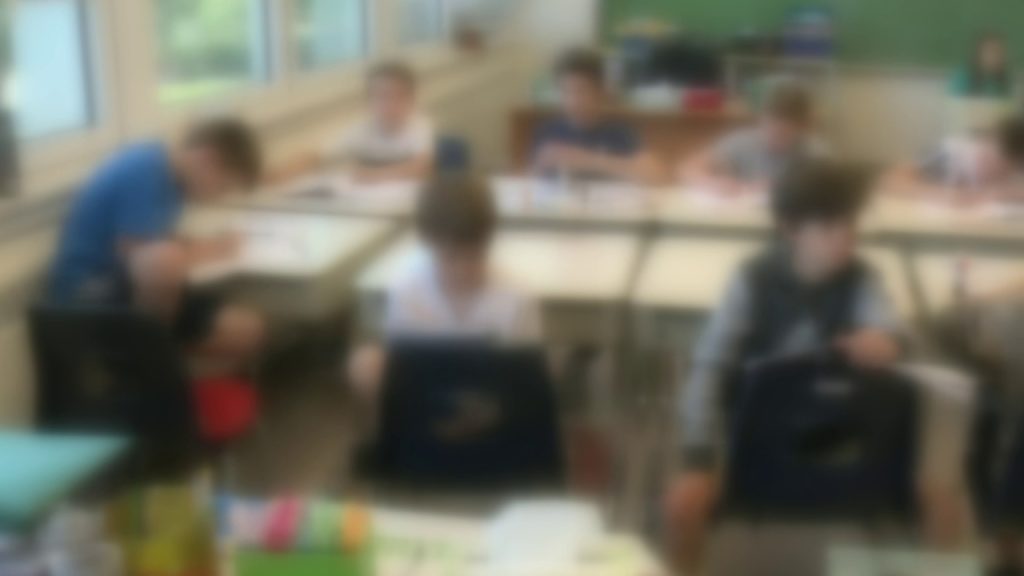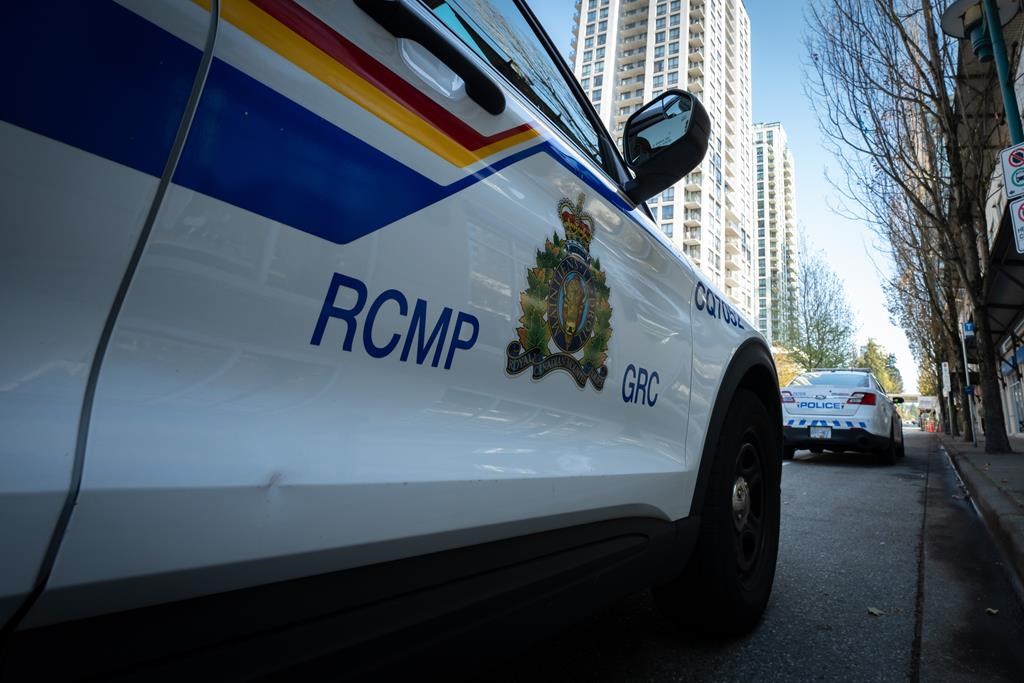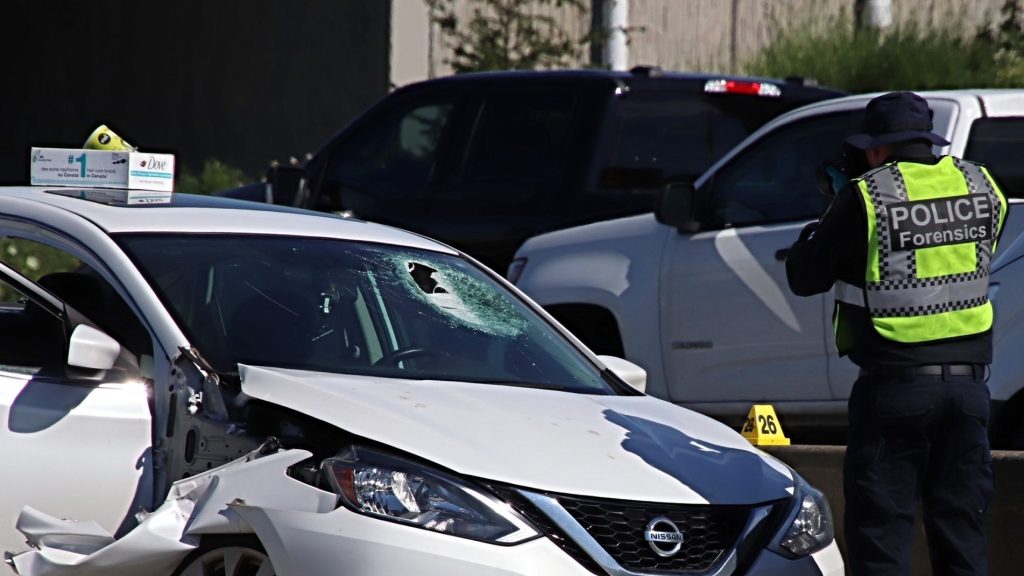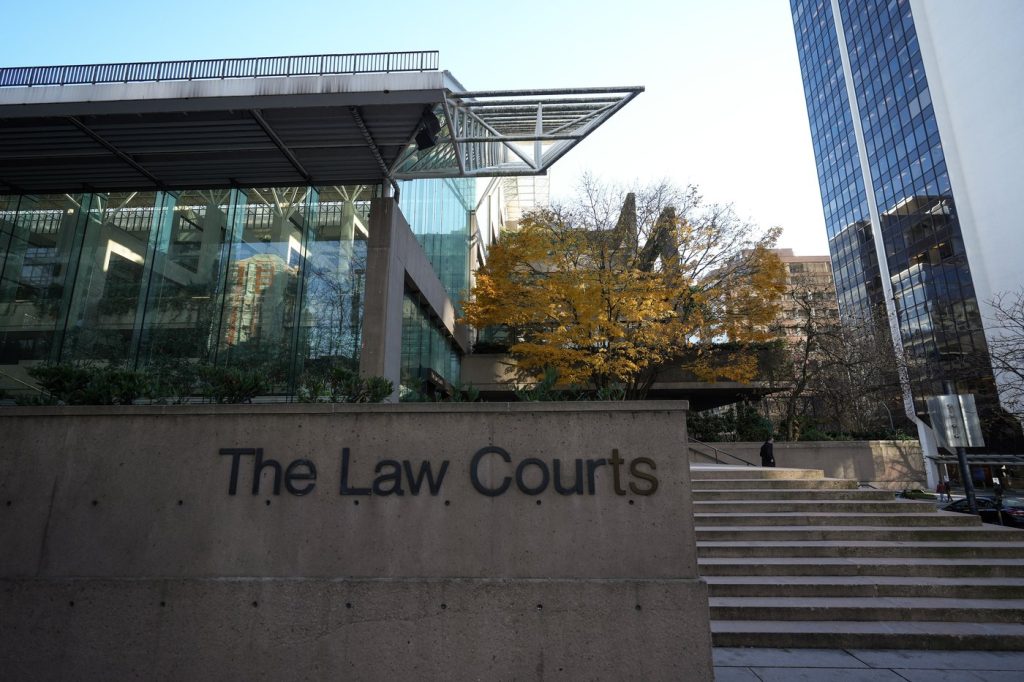The Kids Are Not Alright: Students struggle to adjust

Posted April 13, 2023 5:00 am.
Last Updated April 20, 2023 10:32 am.
This week we’ve been exploring a phenomenon in B.C.’s youngest classrooms — some Grade 1 and 2 teachers say they have never seen anything like the levels of anxiety and social-emotional issues exhibited by their students this year.
Our in-depth investigation, The Kids Are Not Alright, continues as we hear from educators and support staff trying to help kids who are struggling to adjust to life in the classroom.
In many classes, teachers are noticing a big difference in the youngest grades, those with students who spent important formative years during the onset of COVID and its associated restrictions on everything from playdates to family visits to dining out.
“We’ve had to spend a lot longer building a sense of community,” said Jennifer Knibbs, a Grade 2/3 teacher in North Vancouver.
“For their age, they should be beyond ‘me, myself, and I’ — that’s a Kindie or preschooler world — so we’ve had to lay a lot of groundwork with what it means to be part of a community, how do you accept and not judge people, how to express an opinion in a respectful way. We’ve had to spend a lot more time in our social-emotional curriculum where we’ve established what is a positive relationship and what is not a positive relationship. How do we be a part of positive interactions? We’ve even spent time on how to take turns, how to have conversations, so much more than normal.”
Knibbs describes young students who are behind their pre-COVID peers when it comes to social and emotional skills, things like resilience, problem-solving, and negotiating conflict.
There are also higher levels of anxiety and disruptive behaviour in classrooms.
“I think this group, during the heart of COVID, some would be pre-K, so I’m guessing they would have spent some of those formative years where around age three they would probably normally be out in the community, with their parent, interacting with peers their own age,” Knibbs explained.
But she says there has been progress through the school year.
“The kids are happy to be here, they’re happy to have the structure. They love being with each other, it’s just a matter of kind of starting fresh in September. They’re excited and happy to be here but how do they keep it respectful and positive? How do they build those relationships? Do I see progress? Absolutely.”
Some of that success comes with the help of elementary school counsellors, but Knibbs suggests they are stretched thin.
“We only get a part-time counsellor — we could probably use two full-time counsellors at our school,” she told CityNews.
More from the series:
“Our counsellors are lovely, they are hard-working, but they are spinning. There are so many more extreme behaviour cases. I know she feels like she is being more reactive than proactive which, as a counsellor, probably wouldn’t sit right. There’s just such extremes of behaviour, unregulated kids, who need their attention immediately.”
Knibbs feels counsellors’ time at individual schools is so slim that some students who need help are falling through the cracks.
“It’s the quiet, the anxious, the worried kids who do need counsellor help — they are not getting it probably right now. Not to the way they really need to have it because we have such extreme behaviour like nothing I’ve ever seen before,” she said.
Overloaded supports
A counsellor CityNews spoke with, who wishes to remain anonymous, supports two elementary schools and echoes Knibbs’ concerns.
“Definitely we’ve seen a lot more anxiety in school and a lot of that comes from separation anxiety. With that comes school refusal, lateness, families struggling to get their children to school. This often happens in the younger ages, primary classes from K to (Grade) 3,” she said.
“There has been a lot of work at the beginning of the year. I was very busy with kids trying to get them comfortable and supporting families with how they can transition into the school.”
Much of that focus is on helping make connections between students and staff and giving families the tools and language they need to help young students, acknowledging they may feel scared or nervous.
“I know myself and my colleagues have really worked hard on collaborating, working with the families and working with the schools to deal with this issue of kids being so anxious,” the counsellor explained.
When asked about disruptive or extreme behaviours in classrooms, the counsellor says she believes it is a lack of play skills, especially among Grade 1 and Grade 2 students.
“We are noting that students don’t exactly have conflict-resolution skills, the problem-solving skills which you learn by playing and you learn by experience. That skill seems to be lacking and there’s been a lot of classroom- and small-group work really around play and how we engage with others.”
She says her caseload is very large at both her schools, meaning she is often relying on sessions involving entire classrooms.
“In those cases we go ‘whole class’ and do not look at the individual child. What can we do as a group, as a whole, as a school to approach it?”
An added complication, she says, is community supports are stretched.
“So families who are looking for outside supports or looking to put their names on waitlists for counsellors, behaviour, occupational therapists, whoever in the community can support their child, we are finding the waits are long.”
The counsellor says schools prefer to take a wraparound approach to support students and their families in multiple ways, but they are finding that difficult to do.
“Even for a pediatrician, they are on waitlists, doctors, nurses, everyone is so stretched now and we are really feeling that in the school in how we support children. We are not able to do that wraparound approach right now.”
Despite these challenges, the counsellor agrees with Knibbs that progress is being made in the classroom.
“It takes time. I think for adults we expect things to go back to normal. I have a four-year-old right now and the reason I was late today is that she was having a hard time leaving me this morning. There’s a new normal and it’s going to take time. Once students are supported in their social-emotional learning on a school level, on a home level, on a community level, then we can get kids to where they need to be.”
‘Complicated tapestry’ of issues
Some administrators say school districts are doing the best they can with the resources available to them.
“We have to recognize our teachers and counsellors have also lived through the pandemic, so part of the impact is it’s not just kids, it’s kids and their families and teachers who have children who are going through all these pieces. It’s what creates a really complicated tapestry for what we are seeing,” said Jeremy Church, North Vancouver District principal for Safe and Healthy Schools.
“So part of the work we are doing is not just supporting our kids but how we are engaging in conversations with adults and our parents about their connection to it because social-emotional learning isn’t just something we do to our kids, it’s something that all of us adults need to constantly reflect on.”
As for whether there is enough counselling capacity at elementary schools to meet the current demand, Church suggests it’s not so simple a question to answer.
“If all we do is have people see counsellors, we will never have enough counsellors in society. Is there always room for more? Totally. However, butting up against it, in a world of finite resources, counselling is one of those priorities, as are our speech and language pathologists, as are our psychologists, as are all of the other things.”
Church argues it is important for parents and teachers to support social-emotional learning, allowing elementary counsellors more time for “targeted and intensive work.”
“If we are just saying ‘over to the counsellors’ to do that social-emotional learning stuff, there will never be enough counsellors because everybody needs it.”
Church also believes it has to be acknowledged that some of the issues go beyond the role of school supports.
“Not for lack of the skill set, but I think about [counsellors] in a school, there’s 400 or 500 kids there and they are there two and a half days a week. Compared to other districts, that might be gravy, that might be way more than other districts are able to afford, but even in that context there are going to be times when they have to say they are not going to be able to see this kid often enough,” Church explained, adding that’s when they look to their community partners and ask how they can work alongside families.
“I think from a community of care, there is a shift in understanding about how we can do that work better together.”
However, again, the counsellor who spoke with CityNews anonymously suggests those community supports are overloaded right now.
“I know, when we say we can’t get that wraparound service, I know that everyone is working so hard and their waitlists are full, their caseloads are full, families’ loads are full. Everyone is just really stretched right now and really trying their best,” she said.
More from the series:
-
Part 1: Growing concerns in B.C. elementary classrooms
-
Part 2: Parents share heartbreaking stories
-
Part 4: Solutions for the future
-
Part 5: Dr. Bonnie Henry weighs in
If you’d like to share your thoughts, reach out to reporters Mike Lloyd and Sonia Aslam.
-With files from Sonia Aslam








